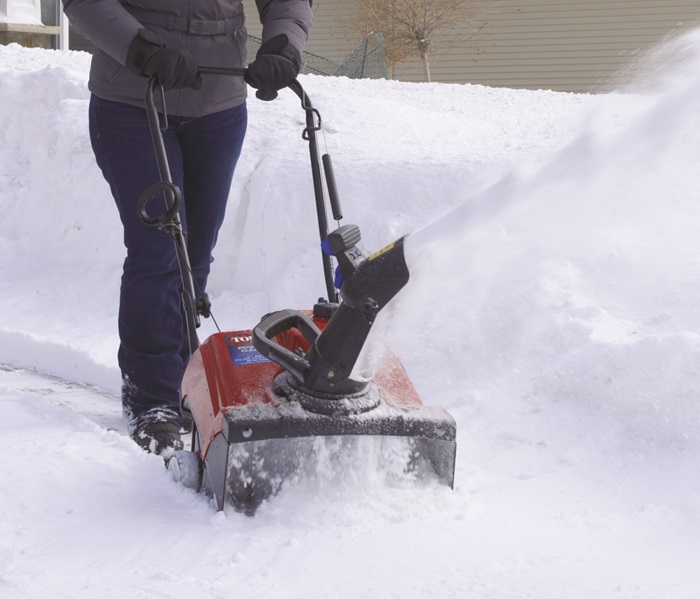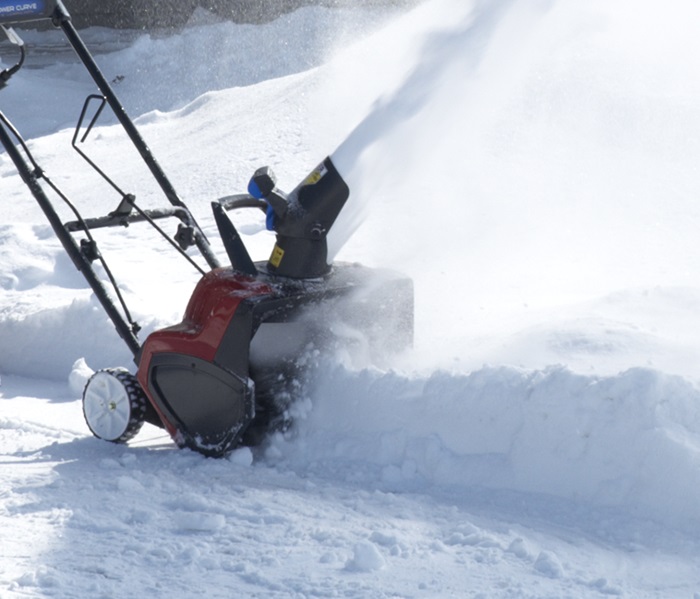Snow blowers can be a Godsend for people who live in heavy snow areas of the United States. However, there are a number of things that can go wrong with a snow blower that could cause delays in removing snow. Six problems to be aware of include:
• A snow blower that doesn’t start
• A snow blower that leaks gas
• A snow blower that won’t throw snow
• A snow blower that doesn’t move
• A snow blower that leaves snow behind
• A snow blower auger that won’t turn on
We will discuss each problem individually in the coming weeks. The first we will tackle will be a snow blower that doesn’t start.
Why Would A Snow Blower Not Start?
There are a number of reasons why a snow blower won’t start. They include:
• Improper starting practice
• An operating problem
• Empty gas tank
• Bad or old fuel
• A fuel cap that isn’t vented
• Bad spark plug
• Bad ignition coil
• Fuel filter or fuel line blockage
• Engine needs priming
• Dirty carburetor
• Bad electric starter
• Bad recoil
Improper Starting Practice
The fact that you use your snow blower just one season during the year, there are many months each year when you don’t use it. As a result, you may forget or be a little unsure as to the process of starting the machine. So, the first thing to do if your blower won’t start is refresh the process in which the blower is started.

When starting your snow blower, follow the succeeding steps:
1. Adjust the fuel shut valve to the “one” or “open” setting.
2. Assure that the ignition or toggle switch is positioned at the “on” position.
3. Adjust to full choke.
4. Adjust machine to three-quarters to full throttle.
If you follow the starting process and you still have problems starting the blower, then consider whether the gas tank is empty.
Empty Gas Tank
Don’t feel embarrassed if you neglect to check whether there is gas in the tank. Everyone makes that mistake at one time or another. Take a few moments to see if the tank has an adequate amount of gas.
Either a 4-cycle engine or a 2-cycle engine powers snow blowers. If your blower runs using a 4-cycle engine, then fill the fuel tank with fresh unleaded gasoline with an octane level of 87 or higher and an ethanol content of no more than 10 percent.
Fill the tank of a 2-cycle engine with an oil and gas mixture based on the recommendations explained in the owner’s manual.
Once the gas tank is properly filled, try starting the blower. If the starting problem persists then it’s possible that you’re dealing with bad or old fuel.
Bad Or Old Fuel
You may not be aware that gasoline has a shelf life of about 30 days. After 30 days fuel can separate and leave a gummy substance. This can result in your blower operating listlessly or it may not start at all.
To avoid this issue, snow blower manufacturers recommend that you include a fuel stabilizer with the gasoline. This assures that the gasoline can be used for a longer period of time. Visit your local automotive store and inquire about appropriate fuel stabilizers that you can use in your snow blower.
If bad gasoline is in the tank, then remove and replace it with fresh gasoline that includes a fuel stabilizer.
If your gas is fresh and includes the additive, but the blower still won’t start, then it’s possible that the fuel cap isn’t venting.
Fuel Cap Doesn’t Vent
Every snow blower fuel cap is equipped with a vent that allows air to escape from the fuel tank. If the vent is plugged or otherwise clogged, then no air will escape and a vacuum develops that inhibits the fuel flow.
To remedy this problem, simply clean the cap to assure that the vent is open. If the blower still won’t start, then replace the cap. Once the cap is replaced and yet the blower still doesn’t start, then it’s possible there is a bad spark plug, a loose connection, or a bad ignition coil.
Bad Spark Plug Or Ignition Coil
Check the machine’s spark plug for a bad connection and clean it of any dirt. Also inspect it for any damage or signs of carbon buildup. It is also suggested that you check the gap of the plug even if the plug purchased was a pre-gapped plug. If you find anything, then the spark plug should be replaced.
If after inspecting the spark plug you discover that all is well, then examine the ignition coil. Use a multimeter to test if the coil is working properly.
If the starting problems persist, then check for a blockage in the fuel line and filter.
Fuel Line Or Fuel Filter Blockage
The gummy residue resulting from bad fuel can clog the blower’s fuel line or fuel filter. Check these components to see if that’s the issue. If so, replace these parts or clean the clogs. This will assure that the fuel flows freely. In addition, replace a dirty fuel filter.
Inspect the fuel line in sections. Use a fuel clamp to stop fuel flow. Once this is complete, place the end of a section of the fuel line into a container of gas so that it can collect it. Remove the clamps to assure that the gas flow is good and that there are no blockages.
If you discover that a part of the fuel line is clogged, disconnect the line and spray carburetor cleaner into the line to break up the clog. Once that’s done, force compressed air into the line to clear out clog. Replace the fuel line with a new one if the clog can’t be removed or if the line appears dry or brittle.
Once everything is back in place, try starting the blower. If it still doesn’t start, then the engine may need to be primed.
Priming The Engine
Priming the engine shifts fuel from the fuel lines into the carburetor. It is suggested that you start the blower without priming first in case there is still fuel in the carburetor. Sometimes the blower doesn’t have to be primed. Adding more fuel to the carburetor during the priming process could cause the blower to flood.
Once this task is complete and yet the machine still won’t start, then check for a clogged or dirty carburetor.
Dirty Carburetor
The carburetor is a key component in assuring that the blower starts properly. It controls the amount of fuel mixed with air, which creates combustion. If the carburetor is dirty or gummed up, fuel can’t run to the jet.
You can remedy this problem by cleaning the carburetor. Take it apart and use a carburetor cleaner to clean it. Be sure that you also clean the float bowl and needle of the carburetor. Inspect the carburetor for damage. If it is damaged or it has excessive amounts of dirt, then replace it.
If the starting problem continues once this task is completed, then the problem could be a bad electric starter.
Bad Electric Starter
When you use the key to turn the starter switch or you flip the toggle switch to turn on the blower and it won’t start or even turn over, then the starter switch or motor could be the problem. Use a multimeter to test the switch. If the switch doesn’t work, replace it.
Bad Recoil On A Pull Start Blower
Instead of a key or a toggle switch, many snow blowers are equipped with a pull start. The pull start includes a recoil that starts the machine. This form of starter features a pulley and spring in the recoil. A bad pulley or spring can prevent the blower from starting when you pull the starter rope. Replace the bad spring and restring the recoil. It still may not start the blower when you pull the rope. That’s because there are other components involved that could be damaged. In this case, simply replace the recoil assembly.
(Source: poweredoutdoors.com)
Next time: The Snow Blower Leaks Gas






